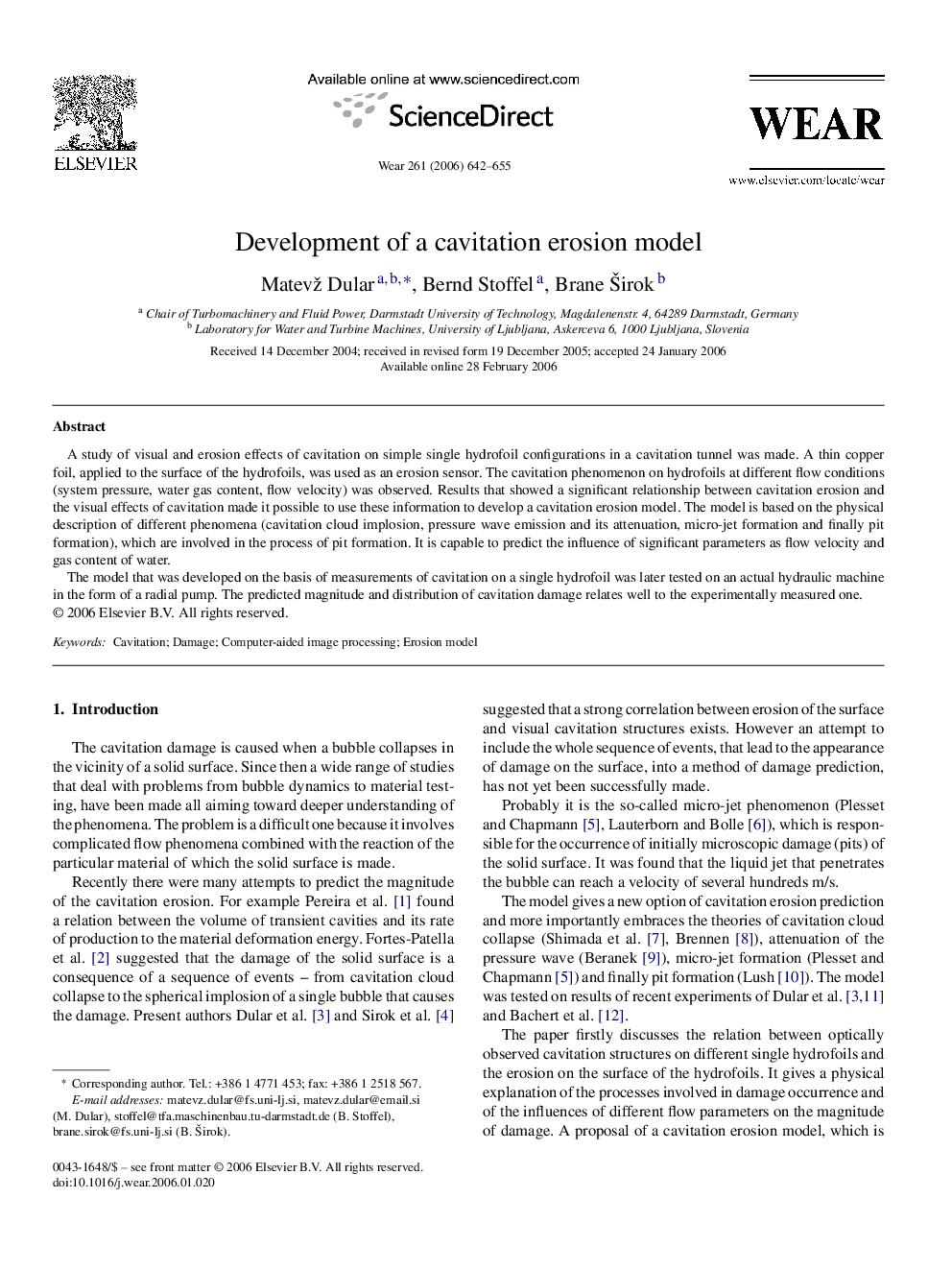| Article ID | Journal | Published Year | Pages | File Type |
|---|---|---|---|---|
| 620120 | Wear | 2006 | 14 Pages |
A study of visual and erosion effects of cavitation on simple single hydrofoil configurations in a cavitation tunnel was made. A thin copper foil, applied to the surface of the hydrofoils, was used as an erosion sensor. The cavitation phenomenon on hydrofoils at different flow conditions (system pressure, water gas content, flow velocity) was observed. Results that showed a significant relationship between cavitation erosion and the visual effects of cavitation made it possible to use these information to develop a cavitation erosion model. The model is based on the physical description of different phenomena (cavitation cloud implosion, pressure wave emission and its attenuation, micro-jet formation and finally pit formation), which are involved in the process of pit formation. It is capable to predict the influence of significant parameters as flow velocity and gas content of water.The model that was developed on the basis of measurements of cavitation on a single hydrofoil was later tested on an actual hydraulic machine in the form of a radial pump. The predicted magnitude and distribution of cavitation damage relates well to the experimentally measured one.
